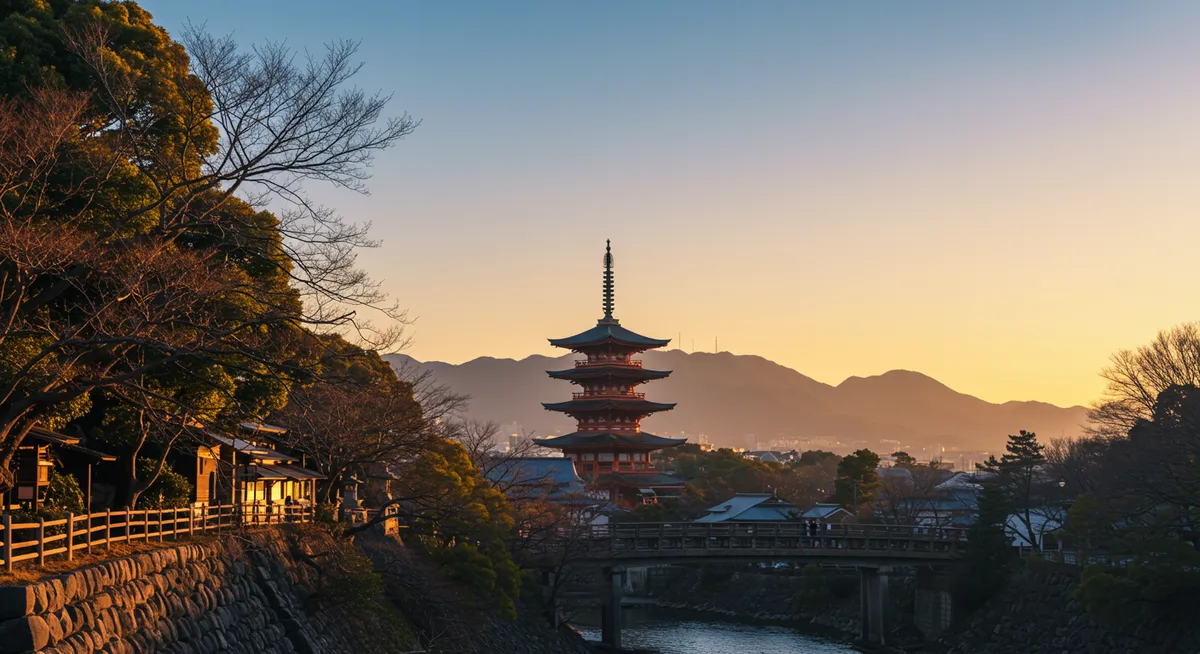Your Essential Guide to Tokyo to Kyoto Bullet Train Travel
Having traversed Japan extensively, the journey between its two most iconic cities, Tokyo and Kyoto, via the Shinkansen (bullet train) is an experience I always recommend. It's not just a commute; it's an integral part of the Japanese adventure. When planning your trip, a common question arises: how many hours from Tokyo to Kyoto by bullet train? The answer is quicker and simpler than you might imagine, offering an incredibly efficient way to bridge the 450-kilometer distance. Find the best shopping experiences with our Tokyo shopping guide.
Shinkansen Types and Travel Times
Plan this trip faster with our free online itinerary maker. Get a personalized day-by-day plan in minutes.
When considering how many hours from Tokyo to Kyoto by bullet train, it's crucial to understand the different Shinkansen services available. The fastest and most frequent is the Nozomi, which completes the journey in approximately 2 hours and 20 minutes. My personal tip: always check for this service first for optimal speed. The Hikari takes about 2 hours and 40 minutes, making a few more stops, while the Kodama is the slowest, stopping at all stations, taking over 3 hours. Therefore, your choice of train dramatically impacts your total travel time. Plan your perfect trip with our Tokyo itinerary.
Booking Your Bullet Train Tickets
Securing your bullet train tickets is generally straightforward, whether you're purchasing individual tickets or using a rail pass. You can buy tickets at major JR stations, online, or via vending machines. It's always a good idea to book reserved seats, especially during peak travel seasons like cherry blossom (Sakura) or autumn foliage, to guarantee your spot. My advice for a smooth experience is to plan ahead, particularly if you have specific travel times in mind. Don't forget that if you're exploring beyond Tokyo, consider our comprehensive Tokyo day trips guide for more adventures. Coordinate your travel plans with our Tokyo itinerary.
Maximizing Your Japan Rail Pass
The Japan Rail Pass can be a fantastic investment for tourists, significantly impacting the cost-effectiveness of your journey from Tokyo to Kyoto. However, it's important to note that the pass typically does not cover the fastest Nozomi Shinkansen services, meaning you'll likely travel on Hikari or Kodama trains. If you're on a tighter schedule and prioritize speed, purchasing individual Nozomi tickets might be worth it. Otherwise, the JR Pass offers incredible value for extensive travel throughout Japan. For a more detailed look at navigating the city, check out our Tokyo itinerary. Find the best shopping experiences with our Tokyo shopping guide.
Tips for a Smooth Shinkansen Journey
To ensure a seamless journey on the Shinkansen, arrive at the station at least 15-20 minutes before departure, especially if you're unfamiliar with the station layout. Stations like Tokyo Station can be sprawling! Look for the specific Shinkansen gates and platform numbers for your train. Food and beverages are available for purchase on board or at the station, making the trip quite comfortable. Moreover, ensure your luggage meets the size restrictions; large bags might require a reservation in designated areas. This attention to detail will ensure your how many hours from Tokyo to Kyoto by bullet train experience is stress-free. Organize your journey with our comprehensive Tokyo itinerary.
Frequently Asked Questions
Is the Japan Rail Pass worth it for Tokyo to Kyoto?
Can I buy Shinkansen tickets on the day of travel?
What's the difference between Green Car and Ordinary Car?
The bullet train journey from Tokyo to Kyoto is not merely a transfer; it's a testament to Japan's efficiency and a chance to glimpse the diverse landscapes between these iconic cities. Knowing how many hours from Tokyo to Kyoto by bullet train will help you plan effectively, ensuring you maximize your time exploring both the bustling capital and the cultural heartland. Happy travels! Explore related insights at Tokyo experiences.
As a seasoned traveler and content creator for ItiMaker.com, I'm passionate about helping others craft unforgettable journeys.
